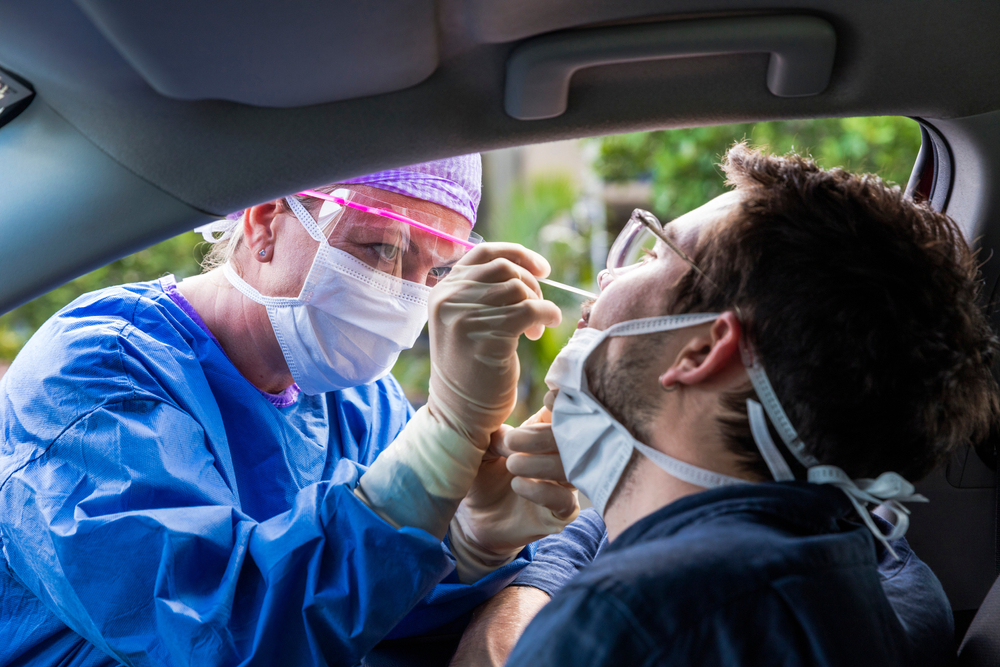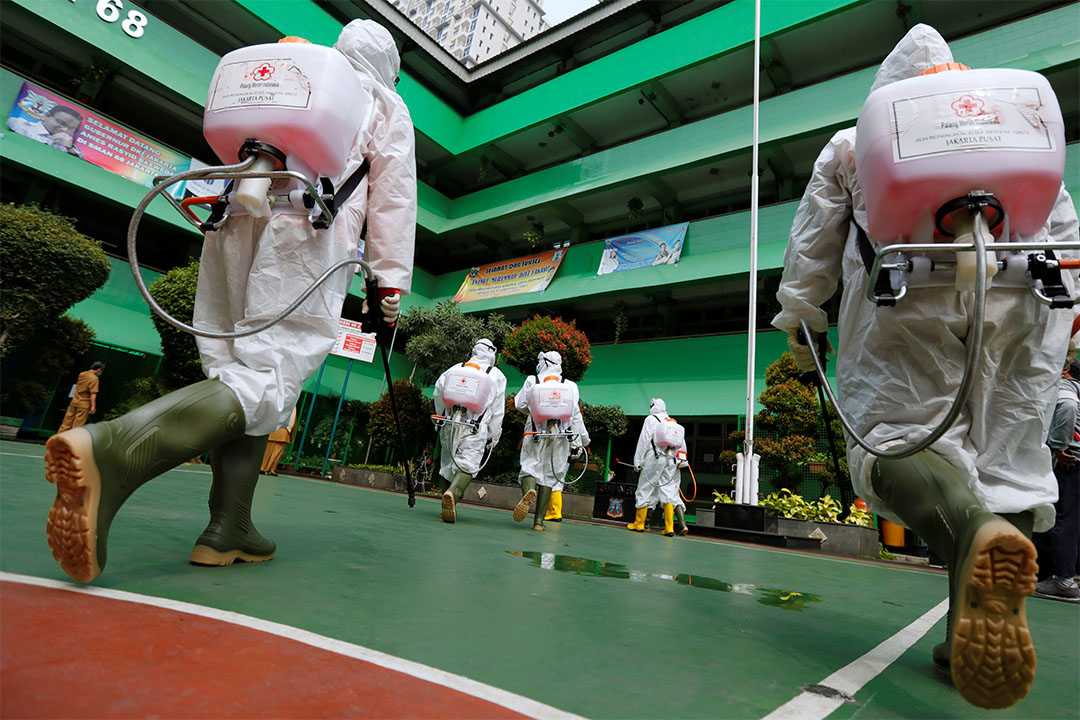
Conventional wisdom is that a vaccine for COVID-19 is at least 1 year away, but the organizers of a U.S. government push called Operation Warp Speed have little use for conventional wisdom. The project, vaguely described to date but likely to be formally announced by the White House in the coming days, will pick a diverse set of vaccine candidates and pour essentially limitless resources into unprecedented comparative studies in animals, fast-tracked human trials, and manufacturing. Eschewing international cooperation—and any vaccine candidates from China—it hopes to have 300 million doses by January 2021 of a proven product, reserved for Americans.
Those and other details, spelled out for Science by a government official involved with Warp Speed, have unsettled some vaccine scientists and public health experts. They’re skeptical about the timeline and hope Warp Speed will complement, rather than compete with, ongoing COVID-19 vaccine efforts, including one announced last month by the National Institutes of Health (NIH). “Duplication only leads to infighting and slowing people down,” says Nicole Lurie, former U.S. assistant secretary for preparedness and response, who advises the Coalition for Epidemic Preparedness Innovations (CEPI), a nonprofit funding and helping coordinate COVID-19 vaccine efforts. “The U.S., and others around the world, should be engaged in this competition against the virus, not against one another.
Warp Speed, first revealed by Bloomberg News on 29 April, has so far only been outlined. President Donald Trump briefly discussed the initiative the next day, saying, “We’re going to fast track it like you’ve never seen before.” According to a CNN report on 1 May, which the source who spoke to Science confirmed, Warp Speed intends to deliver the first 100 million doses of a vaccine in November and another 200 million over the following 2 months.
An extraordinary 110 COVID-19 vaccines are in development, and eight candidates—four from Chinese companies—have entered small trials in people, according to an 11 May update from the World Health Organization (WHO). But there’s less than meets the eye in many of the efforts, says a vaccine veteran who asked not to be named. “Half of them are companies that have three guys, an administrative assistant, and a dog.”
The idea for Warp Speed was hatched in early April, says the official, a scientist, who was given permission to discuss it with Science if his name was not used. “Looking around, it became clear that without a really heroic effort, none of the existing efforts to produce vaccine was going to lead us to have vaccine to prevent what looks increasingly like a second wave that could sweep come October, November,” he says. Warp Speed will have three separate “virtual teams” to address development, supply and manufacturing, and distribution, led by a “core team” of a few dozen experts from government, industry, and academia.
Warp Speed has already narrowed its list of vaccine candidates to 14 and plans to push ahead with eight, the official says. “The idea for us is to pick a diversified portfolio” of vaccines made with different technologies, or platforms. Organizers were concerned that other government vaccine investment has been “heavily weighted” toward just two candidates: one made with messenger RNA encoding the coronavirus surface “spike” protein and the other using a cold-causing adenovirus to deliver the same protein’s gene. Neither technology, the official notes, has yet led to approved vaccines for any disease.
The official declined to identify Warp Speed’s vaccine candidates, but he stressed two key criteria: safety and the potential to make hundreds of millions of doses quickly. “We don’t have time to debug manufacturing issues here,” he says. By July, Warp Speed hopes to have its eight lead candidates in human trials. At the same time, it will fund a large-scale comparison of their safety and efficacy in hamsters and monkeys to help winnow down that group. “If something’s really bad, we’ll get rid of it,” he says.
In parallel with the trials, the project will lay the groundwork for “heavy duty manufacturing” of as many as four different vaccines. More than one may prove worthy, and multiple options guard against contamination incidents and other supply concerns.
Although Warp Speed has not ruled out any type of vaccine, it will not consider ones made in China, such as the inactivated virus vaccine recently shown to protect monkeys from the coronavirus, a first. “We can’t partner with Chinese companies,” the official says. “That’s just not going to happen.” The decision was “above my pay grade,” he adds. But the chosen vaccines could be made by a company that is not headquartered in the United States. (White House trade adviser Peter Navarro in a February memo to the Coronavirus Task Force championed a “Manhattan Project” for COVID-19 vaccines that would prioritize U.S.-based companies.)
Warp Speed’s main goal is to protect the United States. “The attitude here is the oxygen mask approach,” the official says. “We want to get our oxygen mask on first and then we’re going to help the people around us.” Warp Speed, he says, plans to “freely disseminate information” to other countries and share manufacturing technologies, and it may make extra doses for the world.
Many scientists and organizations have argued, however, that any proven COVID-19 vaccines should be accessible and affordable to everyone in the world at the same time. WHO and other groups on 24 April formed the Access to COVID-19 Tools Accelerator that aims to speed development of diagnostics, therapeutics, and vaccines, and ensure “equitable global access to safe, quality, effective, and affordable” products. The European Commission, in turn, organized a fundraiser on 4 May, the Coronavirus Global Response, at which world leaders from many countries and some philanthropists pledged $8 billion; the United States did not participate. CEPI and another nonprofit group, GAVI, the Vaccine Alliance, will oversee the vaccine drive. “It’s a global problem, and it needs a global solution,” says Seth Berkley, who heads GAVI.
Berkley supports Warp Speed’s plan to triage the many candidates, but he calls it a shortsighted mistake to rule out Chinese products, “given the fact that they’re a couple of months ahead.” The Bill & Melinda Gates Foundation is closely following “15 or so” vaccine candidates, including ones from China, and will support the most promising ones, adds Emilio Emini, a former vaccine developer now with the foundation. “You need to have a global portfolio so that you’re not putting all your chips on one part of the roulette table,” he says.
WHO has yet another ambitious COVID-19 vaccine project, the Solidarity Trial, that plans to compare candidates in human studies. That effort is headed by Andrew Witty, former CEO of GlaxoSmithKline, a major vaccine manufacturer. On Monday, WHO Director-General Tedros Adhanom Ghebreyesus said there are seven or eight “top” vaccine candidates the group hopes to accelerate. What will happen with production and supply if one of these other groups and Warp Speed select the same vaccine to prioritize is unknown.
Warp Speed’s relationship to the NIH initiative, Accelerating COVID-19 Therapeutic Interventions and Vaccines (ACTIV), remains unclear. That project plans to coordinate clinical trials of several COVID-19 vaccines and use common institutional review boards, safety monitors, and protocols, NIH Director Francis Collins and co-authors explain in a commentary published online on 11 May by Science. ACTIV is also considering controversial human “challenge” studies, which would fast-track a vaccine’s evaluation by immunizing healthy people and deliberately infecting them with the new coronavirus or a weakened form of it.
When asked about the NIH effort, the Warp Speed official said there is “no conflict at all—they are working together—one intellectually (ACTIV) and one operationally (Warp Speed).” But several scientists on the ACTIV vaccine subcommittee say they know little about Warp Speed. And one member, Peter Hotez of the Baylor College of Medicine, worries about both its name and timeline, noting the antivaccine movement argues products are often rushed to market without adequate testing. “Some of the language coming out of the White House is very damaging,” says Hotez, who is part of a team making a COVID-19 vaccine candidate. As for the January delivery of 300 million doses, “I don’t see a path by which you can collect enough efficacy and safety data by the end of the year.”
Kathryn Edwards, a vaccine specialist at Vanderbilt University who is also participating in ACTIV, notes that the efficacy trials, which will ideally track symptomatic disease in areas of high transmission, also face complicated logistical issues given that many people will only have mild cases of COVID-19 or not know they are infected at all.
The official acknowledges Warp Speed is aiming high. “I know that there’s a reasonable probability that we’re going to fail,” he says. “And if we fail, I want to make sure we’ve investigated all of the different potential ways we could have gone.”
COVID-19 Update: The connection between local and global issues–the Pulitzer Center's long standing mantra–has, sadly, never been more evident. We are uniquely positioned to serve the journalists, news media organizations, schools, and universities we partner with by continuing to advance our core mission: enabling great journalism and education about underreported and systemic issues that resonate now–and continue to have relevance in times ahead. We believe that this is a moment for decisive action. Learn more about the steps we are taking.








